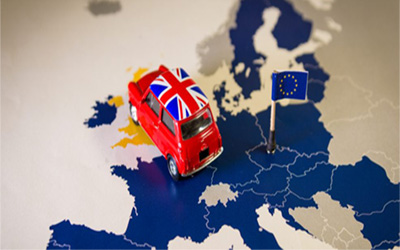The Carbon Border Adjustment Mechanism (CBAM)
Introduction
Are you ready for the biggest shake-up in international trade since the formation of the World Trade Organisation (WTO)? The EU’s Carbon Border Adjustment Mechanism is transforming how businesses approach cross-border trade, putting carbon emissions front and centre. Let’s dive into everything you need to know about this ground breaking environmental policy.
 What Is CBAM? Breaking Down the EU’s Carbon Border Tax
What Is CBAM? Breaking Down the EU’s Carbon Border Tax
The Carbon Border Adjustment Mechanism represents the EU’s bold step toward climate neutrality by 2050. Think of it as a carbon tax on imports that ensures foreign producers play by the same environmental rules as EU companies. This innovative mechanism prevents carbon leakage while promoting sustainable global trade practices.
Key Industries Affected
- Cement manufacturing
- Iron and steel production
- Aluminium processing
- Fertilizer production
- Electricity generation
- Hydrogen manufacturing
Timeline: Critical Dates Importers Must Know
October 2023: Transition Phase Launch
- Mandatory emissions reporting begins
- Focus on direct and indirect greenhouse gas emissions
- No financial obligations during this phase
 October 2024: First Major Reporting Deadline
October 2024: First Major Reporting Deadline
- Full EU methodology reporting required
- Alternative reporting methods accepted temporarily
- Default values permitted until July 2024
January 2026: Full Implementation
- CBAM certificate requirements begin
- Mandatory authorised declarant status needed
- Financial obligations take effect Accountants will need to step in to help
The Impact of CBAM on Global Trade and Supply Chain
Cost Implications for Businesses
- Estimated €2 billion in additional costs by 2030
- Carbon pricing expected to exceed €100 per ton
- Varying impact based on carbon intensity of production
Supply Chain Transformation
- Increased demand for low-carbon suppliers
- Enhanced transparency requirements
- Multi-tier supplier collaboration essential
5 Strategic Steps for Compliance
1, Implement Comprehensive Supply Chain Visibility
Track carbon emissions across all tiers
Monitor real-time production data
Document transportation emissions
2, Optimise Supplier Network Management
Evaluate suppliers’ carbon footprint
Establish environmental standards
Implement collaborative reporting systems
3, Automate Customs and Import Processes
Streamline CBAM declarations
Validate purchase orders against regulations
Maintain compliance documentation
4, Manage Inventory Costs Effectively
Utilise bonded warehouse programs
Leverage foreign trade zones
Implement AI-driven demand forecasting
5, Deploy Emissions Tracking Solutions
Calculate product-level carbon footprint
Simulate emission reduction scenarios
Generate automated compliance report
Turning Challenges into Competitive Advantage
 Innovation Opportunities
Innovation Opportunities
- Green technology adoption
- Sustainable manufacturing processes
- Carbon-efficient supply chain optimisation
Market Leadership Benefits
- Enhanced brand reputation
- Reduced compliance risks
- Improved operational efficiency
Conclusion
Understanding The Carbon Border Adjustment Mechanism represents more than just a regulatory requirement – it’s a catalyst for sustainable business transformation. Companies that proactively adapt to CBAM requirements position themselves as leaders in the emerging low-carbon economy.
Ready to navigate the CBAM landscape? Start by assessing your current carbon footprint and developing a comprehensive compliance strategy. The future of trade is green, and the time to prepare is now.
FAQ
 How is the carbon content of imports calculated?
How is the carbon content of imports calculated?
CBAM requires detailed tracking of both direct and indirect emissions throughout the production process, following standardised EU methodologies.
What are CBAM certificates?
These are digital certificates purchased by importers, representing the carbon emissions embedded in their imported goods. The price aligns with the EU’s carbon pricing system.
How can businesses prepare for CBAM?
Focus on implementing robust emissions tracking systems, evaluating supplier networks, and investing in sustainable technologies to minimise carbon footprint.
SARR Logistics UK
With a legacy built on trust, backed by extensive experience, a global network, and a customer-centric approach, SARR Logistics UK emerges as the ultimate partner for all your supply chain environmental news and feeds. We are in touch with all the latest updates and news, and as any good freight forwarding provider will keep you up to date for the foreseeable future.
If you would like to know more reach out to us today. Find out how your company can become carbon natural take a look at our road to net zero for freight forwarding page. Explore how SARR Logistics UK can help your company contact our team today.![]()



 What Is CBAM? Breaking Down the EU’s Carbon Border Tax
What Is CBAM? Breaking Down the EU’s Carbon Border Tax October 2024: First Major Reporting Deadline
October 2024: First Major Reporting Deadline Innovation Opportunities
Innovation Opportunities How is the carbon content of imports calculated?
How is the carbon content of imports calculated?




